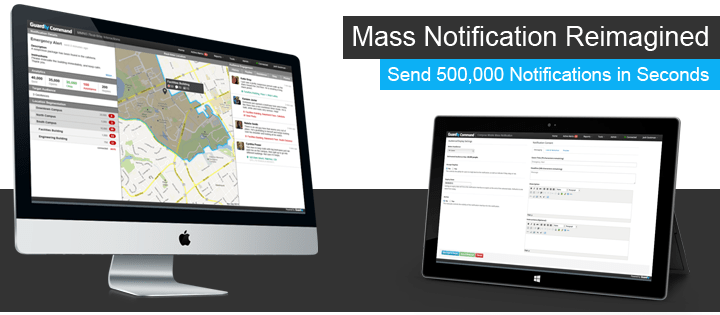Toronto-based startup Guardly is launching a new product today, a mobile mass notification system (MMNS) that will allow its clients to broadcast out alerts and notifications of emergencies to their user base. That type of system has been used before, including by carriers like AT&T who recently started providing general public emergency alerts to iOS 6 users, but Guardly’s system is the first that offers location-based targeting, as well as indoor location positioning (IPS) aimed enterprise clients.
For Guardly, which provides subscription-based mobile security solutions for schools, businesses and building including apartments and parking garages, notifications are a big addition to the service portfolio. Guardly’s MMNS can also send up to 500,000 notifications in just seconds, meaning it likely fits the bill for even the largest of Guardly’s current clients. And the location-based component means that if a company has to send out a security warning to its people in the field related to a specific area, they can target them based on geography – Guardly co-founder Josh Sookman explained in an interview that previously, with systems like this a company would only be able to target people based on other divisions, like their position in the company or home working area.
The IPS aspect works for helping making the notifications a way to communicate with those affected by an emergency. The MMNS is designed to be a two-way communication tool, allowing people affected by situations to respond to the notices with a request for help. Said requests for assistance would be tagged using Guardly’s previously announced IPS tech, so that responders can accurately find them in case of need, and so that victims can broadcast all the information needed to get them help quickly and easily.
“One part of it is the actual delivery, as it’s choosing who actually gets the message,” Sookman said. “But then the second part is around when there is actually an issue in a building, it’s the first time that a mass notification system has actually been coupled with an indoor positioning system at the user level. So, if there’s a chemical spill or a fire, or some sort of threat to the building, people can get these alerts and actually request help with one tap in the application.”
The MMNS component adds another competitive advantage to Guardly over competitors like Rave Mobile, as Sookman says there isn’t a single provider out there in the same space as Guardly that offers the same combination of MMNS services paired with IPS to make the kind of emergency event call-and-response system the Toronto company has created.
The MMNS service is launching in beta for now, and is a paid add-on to existing Guardly services. Sookman says that pricing is reasonable, and based on user volume – not on notification usage, as is the case with some similar services. This has led to companies being reluctant to send out alerts at all, he says, which is something Guardly wanted to avoid. Fear of incurring high costs shouldn’t dissuade businesses from sending out these kinds of warnings, Sookman notes.
In addition to being useful during the situation itself, the alert system also tracks all data related to the notifications and responses, allowing clients to go back and see how each situation was handled after the fact. For Guardly, it’s something that came about in part due to client requests, so there’s definitely an appetite out there for this sort of thing, but we’ll see how quickly it gets adopted, and by which sectors first.
